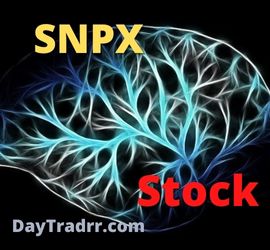What Is Opening Range?
 The opening range is the high and low price for a given security during the first 30-60 minutes after the market opens. This range can be an indicator of market sentiment, trends, and price movements for the day’s trading session. Traders pay attention to a stock’s opening range since it might indicate market mood and price movements throughout the day. The belief is that what happens at the start of the day or trading session determines the market’s direction. The range in which a stock initially moves at first establishes resistance and support levels. Breaching these levels provides the trader with a signal to enter. It also defines the day’s lows allowing the stop loss level to be quickly established.
The opening range is the high and low price for a given security during the first 30-60 minutes after the market opens. This range can be an indicator of market sentiment, trends, and price movements for the day’s trading session. Traders pay attention to a stock’s opening range since it might indicate market mood and price movements throughout the day. The belief is that what happens at the start of the day or trading session determines the market’s direction. The range in which a stock initially moves at first establishes resistance and support levels. Breaching these levels provides the trader with a signal to enter. It also defines the day’s lows allowing the stop loss level to be quickly established.
European traders frequently monitor the first hour after the opening of the old continent stock exchanges. For example, between 8:00 and 9:00 A.M. CET after the opening in Frankfurt. Or, between 9:00 and 10:00 A.M. CET after the opening in London. US traders monitor the opening of the American stock exchanges and Asian traders monitor the opening of the Tokyo exchanges.
Opening Range Breakout
Technical analysts will look for numerous price indicators, including the opening range. Trading ranges provide a useful signal for technical analysts in general. The opening range frequently exhibits strength, weakness, or a sideways trend with no discernible mood. However, many analysts believe the opening range potentially indicates the day’s high and low. This reveals the precise trading range from open to close. To assess price direction, investors can look to the opening range of a security’s price before or after a key announcement. For example, when a firm issues its quarterly earnings report. Investors may also opt to analyze a stock’s starting range in connection with a prospective trading idea.
Traders can watch the opening range using other patterns, different types of technical analysis, and several timeframes. For example, the opening price of a stock in relation to the previous day’s closing price may aid in determining the day’s trend. Traders may then add Bollinger Bands to the opening range to assess volatility. This identifies support and resistance levels two standard deviations above and below the moving average of a stock price. Traders can position for a breakthrough or reversion to the mean when price breaks the starting range band. Some investors may opt to watch only a few minutes of the starting price movement. Others may want to wait an hour or more before making a decision based on the opening range.
Opening Range Trading Strategies
False Breakout
Traders look for the price to go to the high or low from somewhere in the middle. A false breakout occurs when the price swings above or below the high or low but then back above or below the high or low. This signal is potentially an indicator that price is about to change direction or that a trend is about to resume. A false breakout of a level may be viewed as a deception by the market. Initially, it appears that the price will break out but then swiftly reverses. As a result, it misleads all those who accepted the bait of the breakout.
Trading the Reversal
A reversal happens when a stock’s trend shifts and begins to move in the opposite direction of recent price activity. Even the most seasoned investors may find it difficult to respond to reversals. This is because, in the early phases of a reversal, the market still exhibits numerous signs of continuing to move in the previous direction. Traders often look for an entry point to trade on the reversal. One method is to buy when the price climbs above the preceding high after the price drops to the bottom of the starting range and makes a phony breakthrough. The purchase signal must be received inside the opening range. The stop loss point is below the day’s low, which should be close to the opening range low. The profit objective should target a price lower than the opening range high.
Short Sell the Reversal
Alternatively, once the price has moved to the high of the starting range and has created a false breakout, short sell after the price has moved below the low of the previous candle. The brief signal must take place inside the opening range. Set a stop loss above the day’s high, which should be close to the opening range high. Set a profit target that is somewhat higher than the starting range low.
Protecting Trades
When trading a reversal, traders should apply a stop loss somewhere above the day high, which should be close to the opening range high. Then, use a profit target somewhere outside of the open range. Because every stock has a different price and volatility, it takes experience to specify how far the stop loss should be below the day low or above the day high. Also, how far your profit target will be below the opening range high or above the opening range low. Trading comparable stocks on a consistent basis, or at least for a few days in succession, will help in this regard.
Remember, the stock or stock futures contract you’re trading must have a lot of activity and a large trading volume. If the volume is low in comparison to the average, the price is unlikely to snap back to the opposite side of the opening range, resulting in a profit.
Reasons Not to Trade Opening Range Breakouts
The market has completely changed since Tony Crabel wrote his best-selling book. As a result, ORB strategies don’t work as well as they used to.
- Multiple false breakouts – One of the factors is the high number of false breakouts. In fast-moving markets, prices may break out just to revert and move in the opposite direction minutes later. Another factor is the majority of the improvements that have occurred during the evening trading session.
- Enhanced computer analysis – A second reason is the enormous computer power that scans an amazing number of possibilities. This means strategies are arbitraged away pretty quickly.
- Highs and lows are already established – By definition, when using the opening range, highs and lows for the whole trading day are more likely to happen in the morning and at the close. If you are trading ORB then you might arrive too late to profit from the moves. News needs to be adjusted to price and this frequently means volatility. A trader can only prey on volatility. That’s why it makes sense to trade around the open and the close. It is by no means easy.
However, if you look at individual stocks, you may get more favorable outcomes. Indices are simply averages, but tickers or stocks may take on a life of their own, particularly when they are in play. The beauty of the stock market is that there are never-ending possibilities to experiment, research, and modify tactics.
Up Next: What Is a Hard Money Loan?
 A hard money loan is shorter-term financing secured by a hard asset or real property. These loans are usually arranged through an individual or company as opposed to a bank. A hard money loan is a type of loan that is often secured by real property. These types of loans used to be considered loans of last resort used for short-term bridge financing for real estate. However, hard money loans have grown in popularity. As a result, it’s possible to find a good deal if you take the time to explore all your options.
A hard money loan is shorter-term financing secured by a hard asset or real property. These loans are usually arranged through an individual or company as opposed to a bank. A hard money loan is a type of loan that is often secured by real property. These types of loans used to be considered loans of last resort used for short-term bridge financing for real estate. However, hard money loans have grown in popularity. As a result, it’s possible to find a good deal if you take the time to explore all your options.
A hard money loan is often known as a short-term bridge loan. It is a form of financing that uses a hard asset as collateral, usually real estate. These loans have become quite popular with property flippers for quick real estate upgrades. Individuals or private enterprises, not banks, are hard money lenders. Traditional banks base their findings on factors like creditworthiness, financial history, and repayment capabilities. Also, the process of obtaining a standard bank loan may be time-consuming and laborious. It takes time for the lender to investigate an individual and their credit history. The collateral is more important with hard money loans. Ultimately, if a borrower fails to make payments, the lender may repossess the property as payback for the debt.




